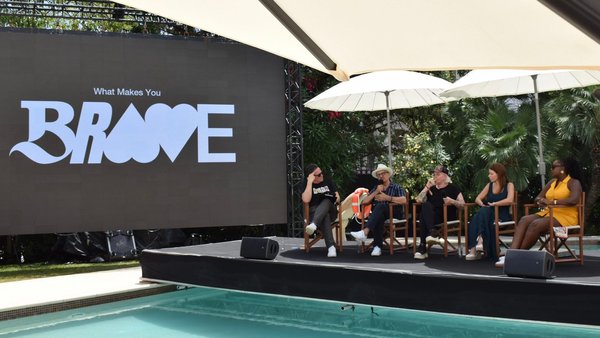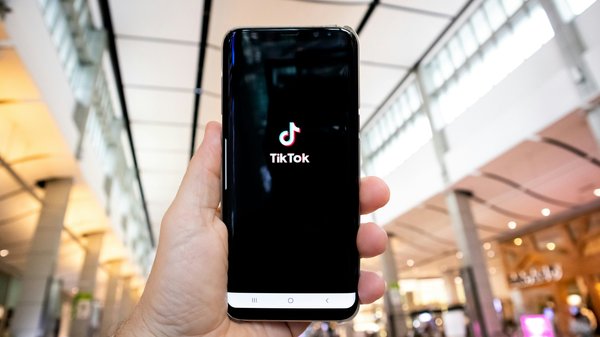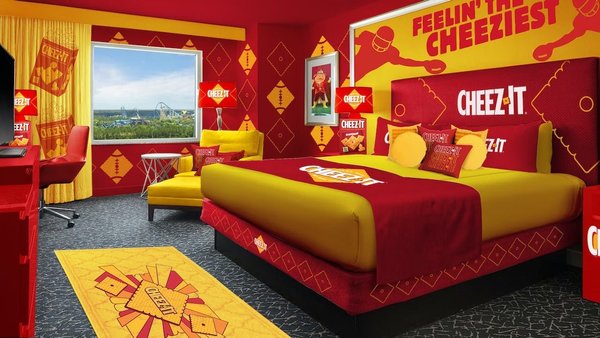Promoted content
Windows to the past push boundaries of outdoor media /
How a dementia-therapy startup won Global’s Look Ahead 2022 contest by demonstrating the immersive and emotional potential of outdoor screens.
Paul Kemp-Robertson
/
‘Sometimes the best way forward is to go way back.’ So says Dan Cole, co-founder of The Wayback, a virtual reality film series and app designed for people with dementia.
Having experienced the incurable disease inside his own family, Cole, an executive creative director at Havas, London, started The Wayback as a side-hustle with a small group of filmmakers, creatives and producers. ‘It’s a reminiscence therapy designed to trigger memories and spark conversations for those living with dementia, and to help their carers and loved ones interact with them,’ he explains. ‘The films immerse the viewer in incredibly detailed, positive moments from the past, which then enable conversations, and hopefully bring laughter and joy. Those moments of positivity stay with them – something that’s proven to help people stay calm and to improve their general wellbeing, which in turn slows down the progress of the disease.’

It was the product’s ability to build positive connections between people that helped The Wayback win last year’s Look Ahead award – a contest launched by Media and Entertainment Group Global, with the objective of reimagining the creative possibilities of outdoor advertising. The triumphant idea – a series of passengers in authentic 60s attire filmed as if interacting with modern day travellers – takes advantage of Transport for London’s (TfL) new high-definition, full motion landscape LCD screens, or ‘digital ribbons’, installed next to the escalators inside select Underground and Elizabeth line stations.
The Look Ahead brief called to the UK’s creative pioneers to submit ‘innovative, site-specific concepts that would send a positive message during these uncertain times where consumers are feeling the pinch.’ The Wayback proposal captivated a jury comprised of senior marketers, strategists and creatives, who loved its contextual potential of being able to coincide its creative content with cultural dates and easily recognisable social moments. Jury comments included: ‘An optimistic, evocative idea that uses digital ribbons as a stage: a powerful opportunity to raise awareness of a unique product to masses of people,’ and ‘You can create ads that sit within a format, or you can create a deeper, shareable experience that lives beyond it.’
Cole enjoyed the ‘unique challenge’ of the brief: ‘When using our app through a headset, it immerses you for a few moments in the past. When you're on an escalator, you're primed for being immersed in something. So, in a way, both are doing the same thing. When it came to the digital ribbons, we wanted to create an idea that was deeply integral to that media. The best outdoor is contextual and tactical and really uses the space around it. So, we're basically giving passengers a glimpse back into the past as they ride the escalator, which should be engaging for everyone.’
Anto Chioccarelli, creative solutions director at Global believes that The Wayback’s painstakingly observed execution provides a glimpse into the future potential of communicating with people in an outdoor space, via a noticeable idea specifically crafted for the environment in which it appears. ‘Outdoor advertising can be such a powerful canvas if creatives understand its full potential and experiment more. When designing for this medium, creatives and marketers should focus on ‘moving’ people; to think beyond the screen towards how an idea can ignite senses, evoke emotions, and shape an experience,’ she says. ‘That’s what The Wayback idea does: the executions leverage the creative opportunity that the ribbon screens offer to deliver impact and engagement. Like all the best ads, they leave room for people to figure things out or for their imagination to unveil. I’m hoping this campaign will bring some positivity and brighten people's days, reminding them of the positive impact that this product can have on people living with Alzheimer’s or dementia.’
Chris Reader, head of commercial media at TfL describes the Look Ahead winner as: ‘an excellent example of a campaign that manages to capture the imagination and attention of its audience, while still clearly communicating its purpose and call to action. When dealing with sensitive topics, such as dementia and Alzheimer’s, it is incredibly important to ensure that the tone of the campaign is fitting of the subject matter. This creative shows how Out of Home can enable bold campaigns that make a splash, while still being meaningful and sensitive. It also demonstrates how the TfL estate continues to be a natural home for brands who want to push the creative boundaries and reach a thriving, diverse audience that reflects the capital that we serve.’
The campaign will run on all 15 ribbons across the TfL network from 12 June. Chioccarelli hopes that The Wayback team’s idea will inspire UK creative agencies to recognise the true advantage of OOH. The best work in this medium, she says, ‘empowers the audience to become active participants, co-creators, to contribute with their own perspective to generate a deep level of engagement.’ Her advice for marketers is to: ‘Think about unique ways of envisioning human experience. Create connections by keeping creative real, human and simple. To quote jury member Nils Leonard [co-founder of Uncommon Creative Studio]: “ignore advertising for a second – you have 10 seconds of someone’s life, what would you like to do with it?” That’s a better question.’
Want more of the same? /
We don’t just write about best-in-class campaigns, interviews and trends. Our Members also receive access to briefings, online training, webinars, live events and much more.




